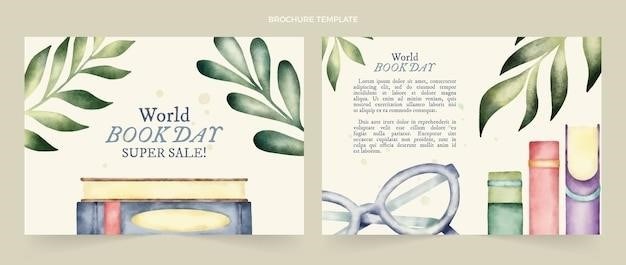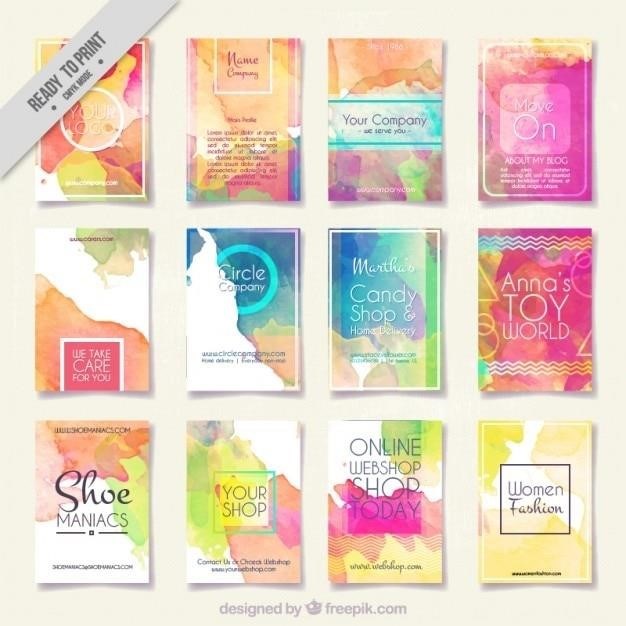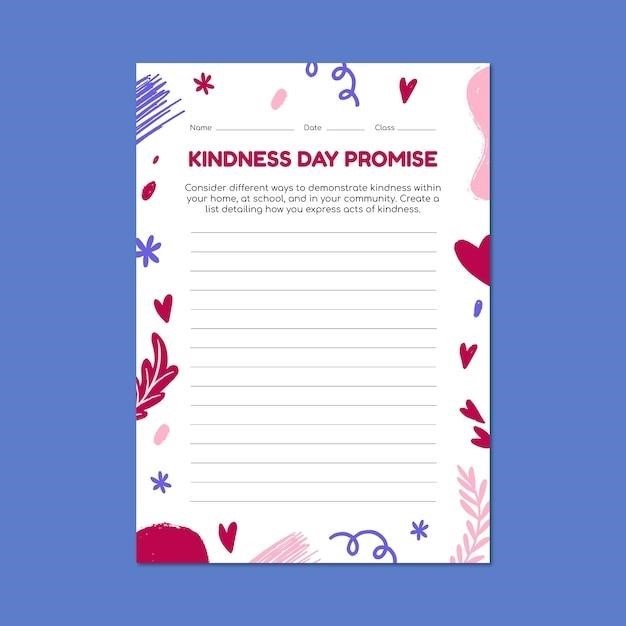Watercolor Tutorial Book⁚ A Comprehensive Guide
This comprehensive guide will take you on a journey through the world of watercolor painting, from the basics to more advanced techniques. You’ll learn everything you need to know to create beautiful and inspiring artwork.
Introduction
Welcome to the world of watercolor painting! This captivating art form, characterized by its ethereal washes and vibrant colors, has captivated artists for centuries. The beauty of watercolor lies in its fluidity, allowing for both delicate washes and bold strokes, resulting in a unique artistic expression. Whether you’re a complete beginner or seeking to enhance your existing skills, this comprehensive guide will empower you to unlock the potential of watercolor painting.
Our journey will begin with an exploration of the essential tools and materials that form the foundation of your watercolor practice. You’ll discover the different types of paints, brushes, paper, and other supplies, each playing a crucial role in shaping your artistic vision. Once you’ve assembled your toolkit, we’ll delve into the fundamental techniques that form the bedrock of watercolor painting.
From mastering basic brush strokes to understanding the nuances of color mixing and blending, you’ll gain the knowledge and confidence to create captivating artwork. As you progress, we’ll explore specialized techniques for capturing landscapes, floral subjects, and even animals, allowing you to express your artistic creativity across diverse genres.
Essential Tools and Materials
Before embarking on your watercolor journey, it’s essential to gather the necessary tools and materials that will enable you to create stunning artwork. These tools, each with its unique characteristics, play a crucial role in shaping your artistic expression.
Let’s start with the heart of your watercolor experience — the paints. Watercolor paints come in a variety of formats, including tubes, pans, and even cakes. Tube paints offer a greater level of control and are ideal for mixing and blending. Pans, on the other hand, are compact and portable, making them perfect for on-the-go painting.
Next, you’ll need brushes, which are the tools that translate your artistic vision onto the canvas. Brushes come in various shapes and sizes, each suited for specific tasks. Round brushes, for example, are versatile and excellent for detail work, while flat brushes are ideal for creating broad washes.
Finally, no watercolor artist can do without high-quality watercolor paper. Watercolor paper is specifically designed to withstand the wetness of watercolor paints, preventing buckling and warping.
Basic Watercolor Techniques
Mastering basic watercolor techniques is the foundation of creating captivating artwork. These techniques, while seemingly simple, hold the key to unlocking your artistic potential and allowing you to express your creativity with confidence.
One of the fundamental techniques is wet-on-wet, where you apply wet paint to a wet surface, creating soft, blended washes. This technique is ideal for capturing the fluidity and ethereal nature of watercolors.
Another technique is wet-on-dry, where you apply wet paint to a dry surface, resulting in sharper edges and more defined shapes. This technique is excellent for adding details and creating textures.
Layering is a technique that involves applying multiple washes of paint, allowing each layer to dry before applying the next. This method builds depth and complexity, creating a rich and vibrant palette.
Finally, masking is a technique used to protect certain areas of your painting from paint. This can be achieved using masking fluid, tape, or even objects like stencils; Masking allows you to create sharp lines, negative spaces, and intricate details.
Color Mixing and Theory
Understanding color mixing and theory is crucial for creating harmonious and visually appealing watercolor paintings. By mastering these concepts, you can unlock the full potential of your palette and achieve stunning color combinations.
The color wheel is a fundamental tool for understanding color relationships. It consists of primary colors (red, yellow, blue), secondary colors (orange, green, violet), and tertiary colors (created by mixing primary and secondary colors).
Complementary colors are located opposite each other on the color wheel, creating high contrast and visual excitement. Analogous colors are located next to each other on the color wheel, creating a harmonious and cohesive palette.
Warm colors, such as red, orange, and yellow, evoke feelings of warmth, energy, and excitement. Cool colors, such as blue, green, and violet, evoke feelings of calmness, serenity, and tranquility.
By understanding the principles of color mixing and theory, you can create a wide range of color combinations and effects, from vibrant and bold to subtle and nuanced.
Landscape Painting
Landscape painting offers a boundless canvas for exploring the beauty and diversity of nature. With watercolor, you can capture the ethereal qualities of light, the subtle nuances of color, and the dynamic interplay of form and space.
Begin by observing the landscape and identifying the key elements, such as mountains, trees, water, and sky. Pay attention to the light and shadow patterns, the colors and textures, and the overall composition.
Use washes to create the background and distant elements, gradually building up layers of color and detail. For closer elements, such as trees and rocks, use more defined brushstrokes and textures.
Remember to consider the perspective and depth of the landscape. Use techniques like atmospheric perspective to create a sense of distance and depth.
Experiment with different brushstrokes and techniques to capture the unique character of each element. Allow the watercolor to flow freely, creating soft edges and delicate transitions.
Floral Painting
Floral painting offers a delightful opportunity to explore the intricate beauty and delicate grace of flowers. With watercolor, you can capture the vibrant hues, subtle textures, and graceful forms that make flowers so captivating.
Begin by studying the flower you wish to paint, observing its unique characteristics and structure. Pay attention to the petals, leaves, stem, and any other details. Consider the light and shadow patterns, the colors and textures, and the overall composition.
Use washes to create the background and the delicate petals, gradually building up layers of color and detail. For the leaves and stems, use more defined brushstrokes to create texture and form.
Experiment with different brushstrokes and techniques to capture the unique character of each element. Use a light touch to create soft edges and transitions, allowing the watercolor to flow freely.
Remember to consider the perspective and depth of the flower. Use techniques like layering and blending to create a sense of depth and dimension.
Animal Painting
Painting animals with watercolor is a captivating challenge that allows you to explore the unique features and personalities of the animal kingdom. Whether you’re drawn to the graceful movements of a bird, the majestic presence of a lion, or the playful antics of a puppy, watercolor provides a versatile medium for capturing their essence.
Start by carefully observing the animal’s anatomy, paying attention to its proportions, muscle structure, and fur or feathers. Consider the light and shadow patterns that define its form and create depth. Use a variety of brushstrokes to depict different textures, from the smooth skin of a reptile to the fluffy fur of a bear.
For realistic animal paintings, use layering techniques to build up the color and detail, starting with light washes and gradually adding darker shades. Remember to pay attention to the animal’s eyes, as they often convey its personality and emotions. Use a fine brush and a touch of white paint to capture the sparkle and depth of the eyes.
Experiment with different washes and textures to create unique effects. You can use wet-on-wet techniques to create soft, blended transitions, or wet-on-dry techniques to create sharper edges and details. Don’t be afraid to experiment and let your creativity guide you.
Advanced Watercolor Techniques
As you gain confidence and mastery in watercolor, you can delve into more advanced techniques that will elevate your artwork to new heights. These techniques require a deeper understanding of color mixing, brush control, and the interplay of water and pigment.
One advanced technique is masking, which involves using masking fluid or tape to protect certain areas of your paper from paint. This allows you to create intricate details, sharp edges, or negative space effects. Another technique is lifting, where you remove paint from the paper using a damp brush or sponge to create highlights, textures, or atmospheric effects.
Experiment with layering washes to create depth and dimension. You can use wet-on-wet techniques to blend colors and create soft transitions, or wet-on-dry techniques to create sharper edges and details. Explore the use of salt, masking fluid, or other materials to create unique textures and effects.
Embrace experimentation and don’t be afraid to break the rules. The beauty of watercolor lies in its fluidity and unpredictability. By pushing your boundaries and exploring new techniques, you will discover your own unique artistic voice.
As you embark on your watercolor journey, remember that practice is key. The more you experiment and explore different techniques, the more confident and skilled you will become. Don’t be afraid to make mistakes; they are a part of the learning process. Embrace the unpredictable nature of watercolor, and allow it to inspire your creativity.
This comprehensive guide has provided you with a solid foundation in watercolor painting. From choosing the right tools and materials to mastering basic and advanced techniques, you now have the knowledge and skills to create beautiful and expressive artwork. Continue to learn, explore, and most importantly, enjoy the process of creating watercolor paintings.

As you progress, consider exploring additional resources such as online tutorials, workshops, or art classes to further refine your skills. The world of watercolor is vast and full of possibilities. Remember, the most important thing is to have fun and let your creativity flow.


